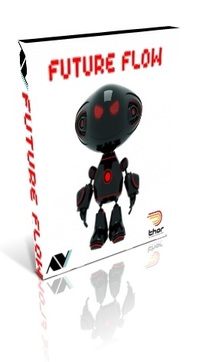
The artist at sound check. Beware the Fog of Doom that’s enveloping the stage! Photo (CC-BY) MDL.hu.
With a full length record, we also get a glimpse into sound design and live touch control, along with a cross-media event involving photography and sculpture. It’s the latest Amon Tobin, and for lovers of digital sonic manipulation, it’s big news.Amon Tobin’s ISAM arrived this week, and it’s an epic opus of ambience and digitally-sculpted sound candy. It’s digitally-distorted without being glitch, off on cinematic reveries through noise before breaking into the odd deep-bass break. It’s also a virtuoso solo album on digital control via the Haken Continuum Fingerboard. Like that instrument, it seems free in its exploration of sound space, totally untethered from gravity.
A lot of it is pure synthesis, says the artist, though there are plenty of recorded vocals, too. (I assume when Tobin says there are “no samples,” he means “…of other people’s sounds,” as there’s definitely a lot of recording, unless he’s been holding off on us and he actually is a robot, thus making a direct digital connection to his computer.) I could imagine some finding the endless digital stretching effects and morphs and punctuation fatiguing, but tracks don’t overstay their welcome; each is a miniature sonic tableaux, and delicate moments balance the bass-ier staccato scenes.
You can have a listen without any particular narration, but Amon makes use of the commenting feature on SoundCloud to provide little annotations about what he’s doing and what you’re hearing. The full album is available on SoundCloud and sounds reasonably listenable as a 128k MP3 stream – certainly good enough to determine whether you love or hate this, and whether you want to buy a proper, high-quality download.
'ISAM' - Full album with track-by-track commentary from Amon Tobin by Amon Tobin
'ISAM' - Full album with track-by-track commentary from Amon Tobin by Amon Tobin
Via Topspin, there’s also a download of one track available. (See our notes on Topspin earlier this week.)
Continue reading



















